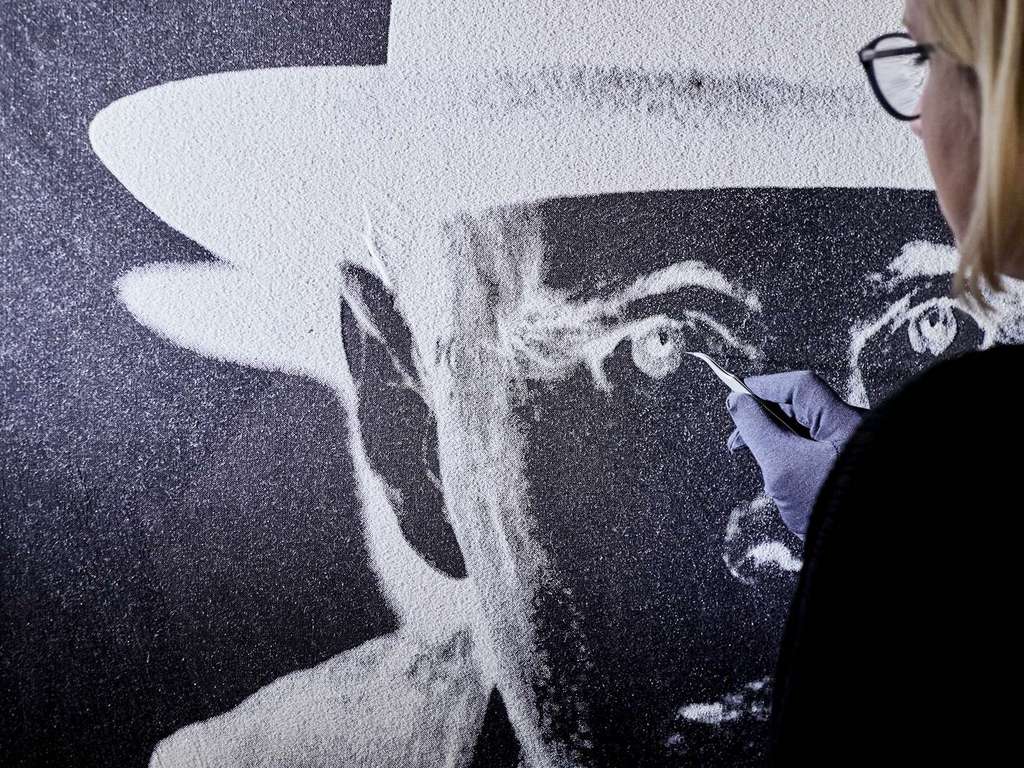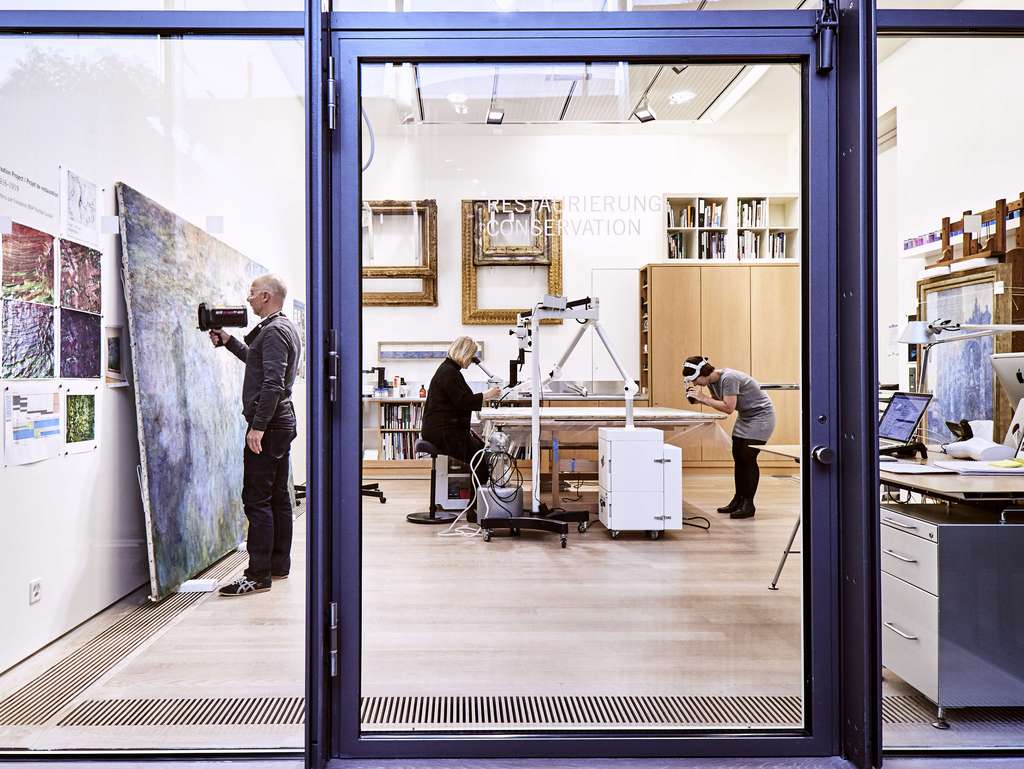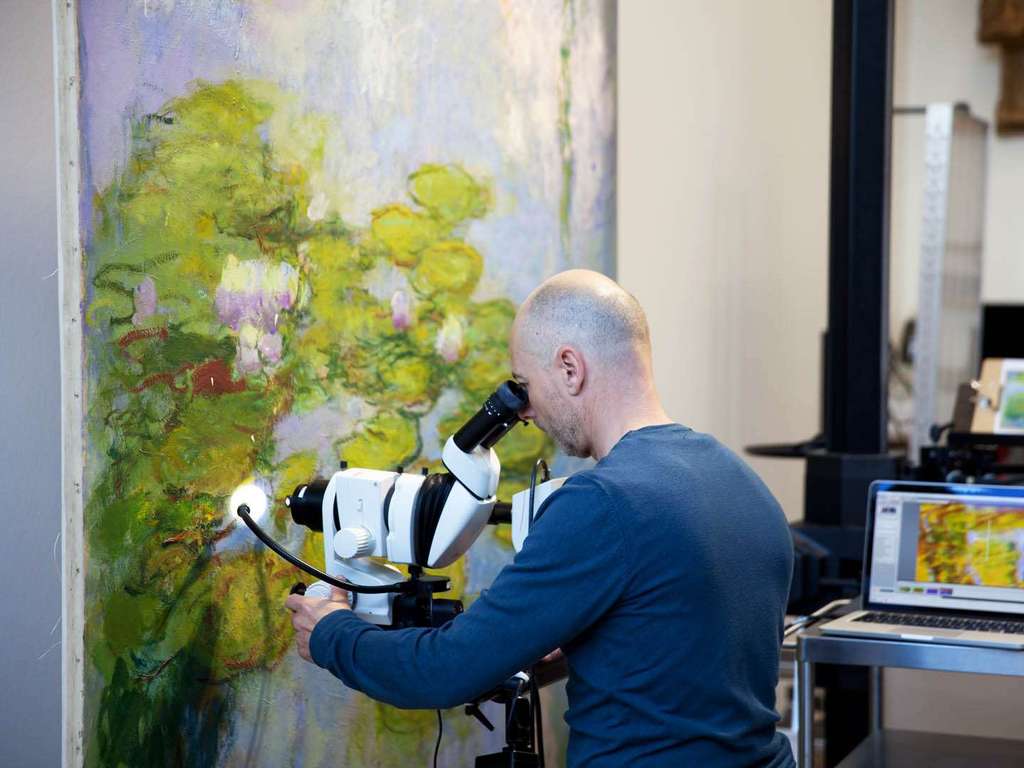Understanding the working method
In 2012, after three years of extensive art-historical research, conservation, and restoration, the Fondation Beyeler completed the greatest conservation project in its history: the scientific examination of Henri Matisse’s Acanthes (1953, 311.7 x 351.8 cm), a masterpiece from his series of large-format “papiers découpés.” Our partner for this project was the international art insurance company Nationale Suisse.
Initial condition
The goal of the project was to conduct art-historical research on the making of Matisse's cut-out, to evaluate the condition of Acanthes and to determine and execute necessary conservation work. Conservators also conducted an intensive technical examination, studied sixty comparable works and reconstructed a dummy “papier découpé” themselves. Contact with experts from national and international collections to discuss similar challenges in conservation and restoration was another important aspect of the project.
One of the major challenges in the conservation and restoration of Acanthes is the complex structure of the image, which consists of several layers and needs to be stabilized. The gouache, papers, pastes, and fabric each underwent different natural aging processes. For example, the unprotected margins showed tears, creases, and stains.
In charge of the project were Markus Gross, chief conservator of paintings at the Fondation Beyeler, Stephan Lohrengel, paper restorer, and curator Ulf Küster. The public was able to view the entire conservation procedure from a show-atelier built especially for that purpose. .
Matisse’s working methods
One of the project’s key findings regarded Henri Matisse's working methods. About half of his 220 cut-outs were mounted on canvas to stabilize them, a job carried out by the Lefebvre-Foinet company. Matisse himself developed and approved this procedure during his lifetime. Many of the operations in the studio were not conducted by Matisse himself, but by assistants working under his supervision. They would paint the papers and affix them to the wall. The essential elements of the work process, however — the cutting and composition — were done by the artist himself.
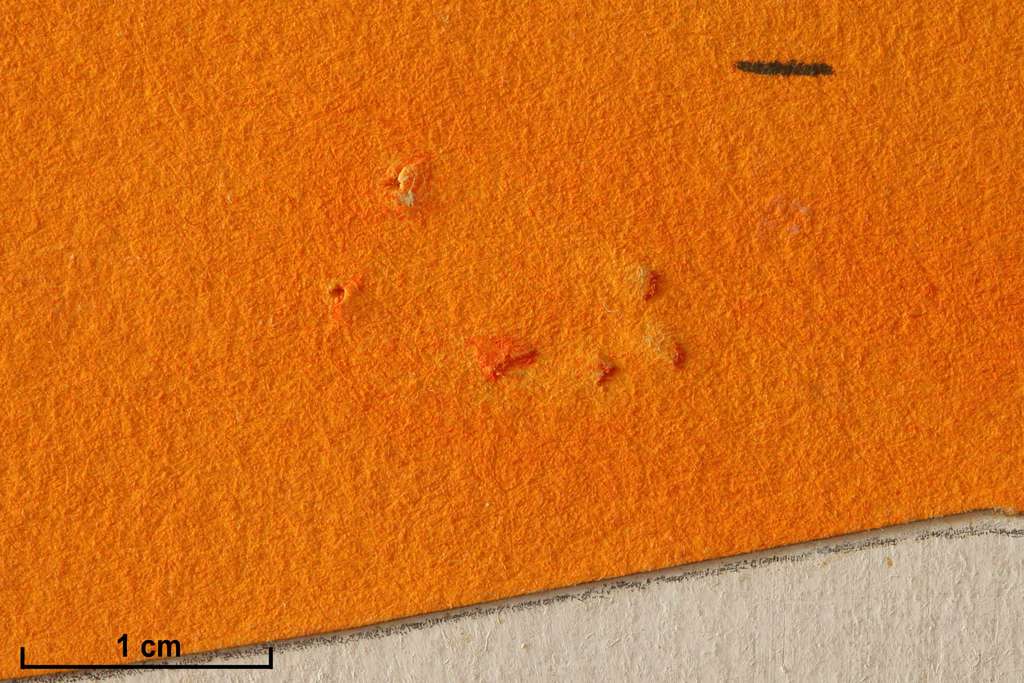
Pinholes
The separate paper elements and paper background are full of pinholes as a result of Matisse's working methods. They were made when the forms were pinned to his studio wall. They also provided evidence that this particular piece began and developed from the blue forms, as they have the most pinholes. Before the forms were removed from the wall, the projecting nails were replaced with pins. These were used to fix the forms to the paper background, then a piece of tracing paper was laid on the work in order to draw the forms. The creases in the green forms and the visible charcoal lines were not the result of damage but originated in the studio due to Henri Matisse's working methods and technique.
Good condition of the cut-out
The examinations showed that in comparison to Henri Matisse’s other large-scale “papiers découpés,” Acanthes is in good to very good condition. Only minimal stabilization was needed, and a few weak spots needed to be improved. Though it involves thirteen different layers of paper, paste, canvas, and a stretcher frame, the structure is considered stable. Conservators did not discover any major damage on the image itself. This is due in part to the use of quality materials and the fact that it was well mounted. The work was also protected by glass from an early date.
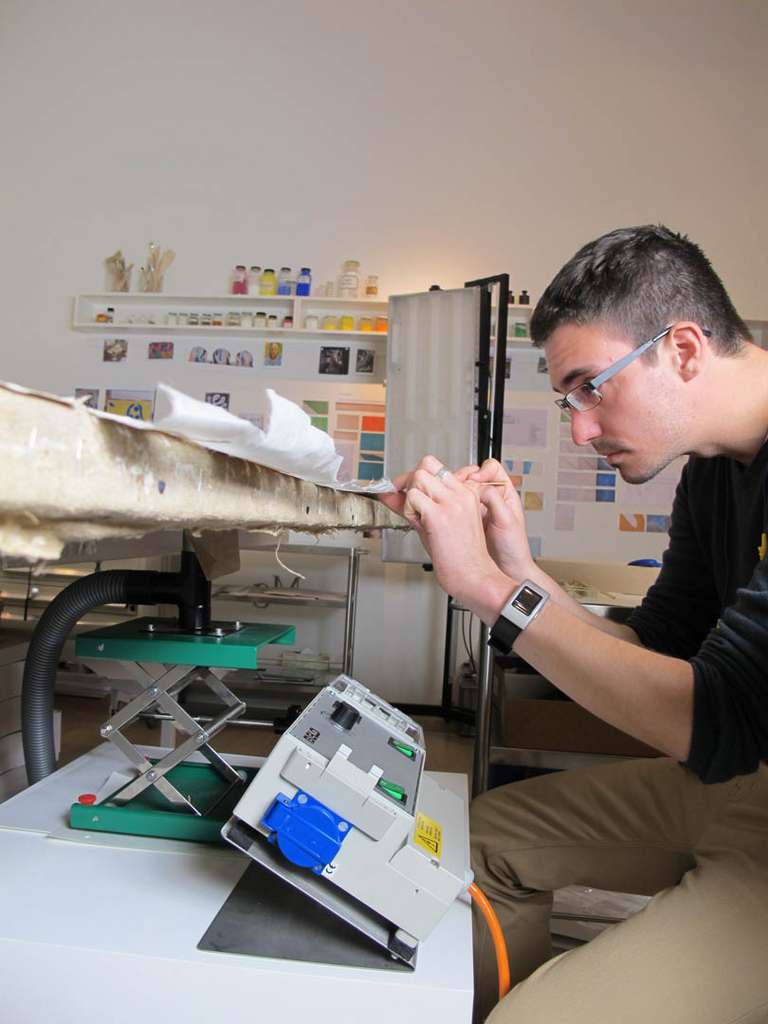
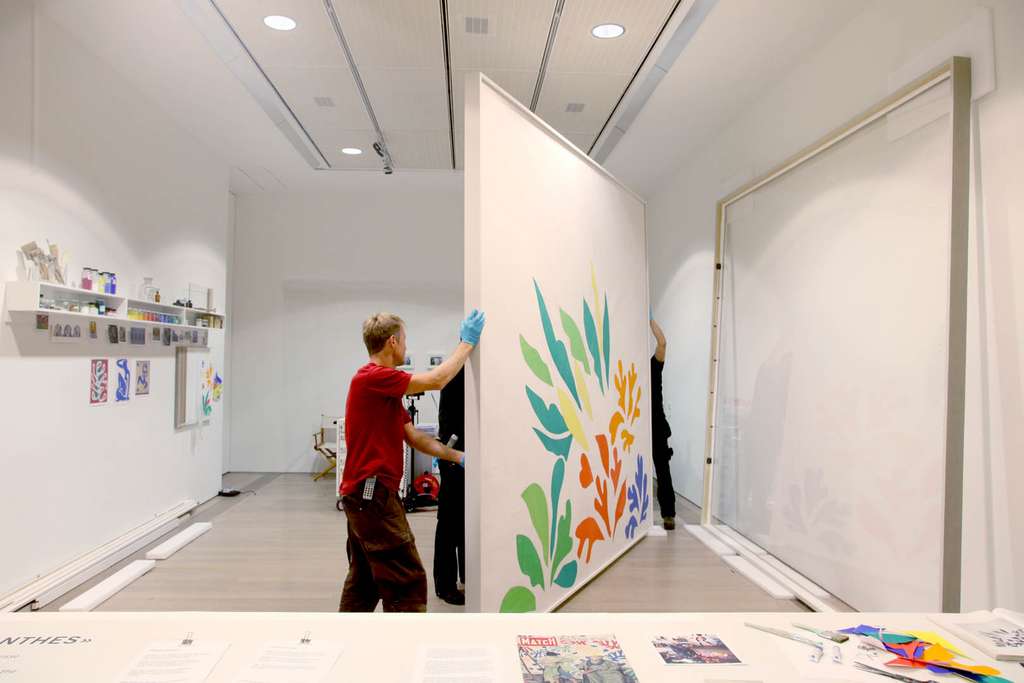
New frame
Acanthes is the largest framed picture under glass in the Beyeler Collection [[link]]. The frame lends the structure stability, and the special glass protects the fragile surface from dirt, physical damage, and harmful light radiation. The new framing of the work is intended to accentuate the “reduction of form to the essentials” intended by Matisse. During the extensive search for a solution, conservators worked in close collaboration with the framing specialists and curators of the Fondation Beyeler.
The artwork
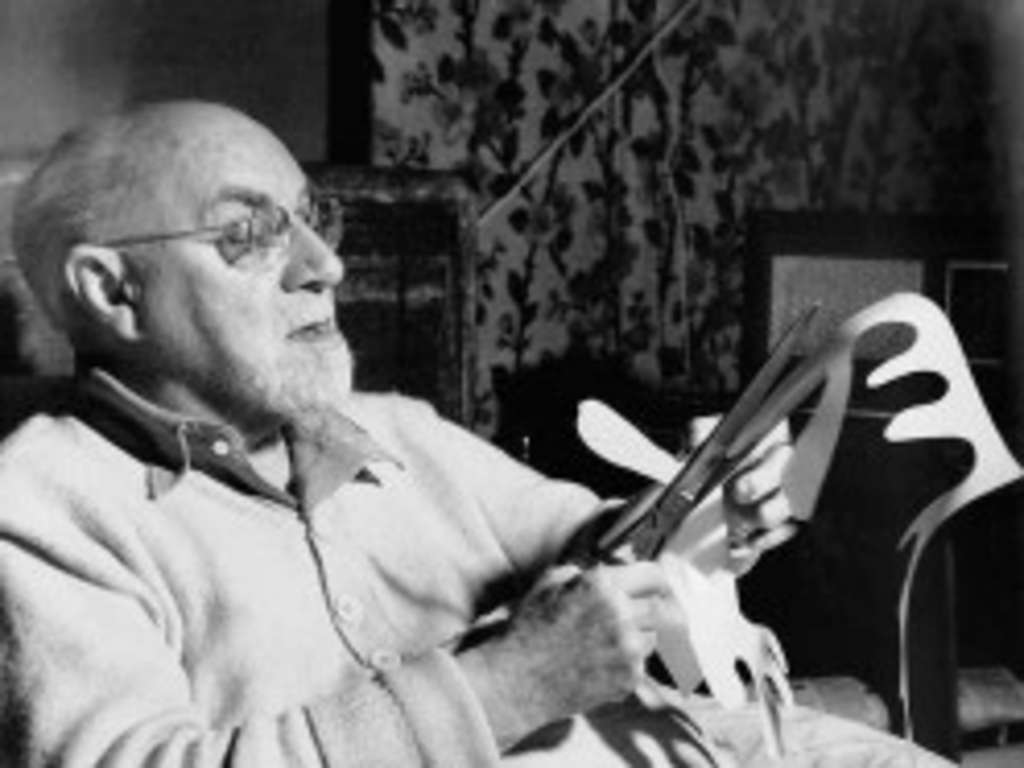
Henri Matisse: Biography
The French painter, sculptor, and graphic artist studied in Paris, at the Académie Julian and the École des Beaux-Arts, among others. Around 1900 he created his first sculptures and at the same time began to paint with unmixed, bright colors under the influence of Monet, Cézanne und Gauguin. He gained attention at the Salon d’Automne as the leader of the Fauves. He made his first woodcuts and lithographs after a trip to Algeria in 1906.
From early on he sought to translate space and solids into something two-dimensional and decorative. At first, his interiors and still lifes combined realistic three-dimensional motifs with arabesques. After the life-changing experience of the Islamic exhibition in Munich in 1910 and a trip to Morocco in 1912, he began painting only flat surfaces. The motif of the carpet, the symbol of the garden of happiness in Islamic Art, can be found throughout his work. He strove to create sacred art full of peace and harmony, accessible to everyone. In the late 1920s, he turned to murals and architectural decoration. He lived in Nice and Venice during the Second World War, then returned to Paris. In 1948 he made his first Gouaches découpées. From 1947 to 1951 he decorated the Chapelle du Rosaire in Venice.
Other projects
„JOSEPH BEUYS“ - andy WARHOL
Andy Warhol is a central figure in American Pop Art and one of the twentieth century’s most influential artists. The painting Joseph Beuys (1980) is one of the few works that the artist decorated with a fine layer of diamond dust.
Overview - Conservation
Since 2001, a dedicated team has been working on the long-term preservation of the collection’s major works so that they will remain accessible to future generations.
„NYMPHÉAS“ - claude MONET
Claude Monet was among the most important artists of the 19th century and the leading representative of Impressionism. Nymphéas, one of his water lily paintings, is to be scientifically examined and restored with the support of the Fondation BNP Paribas Suisse.
